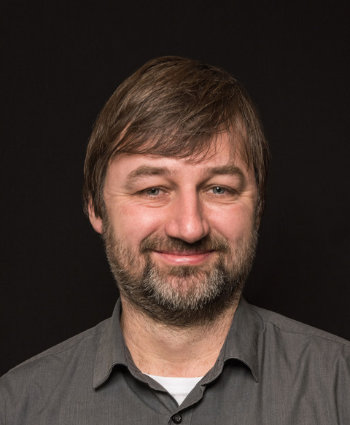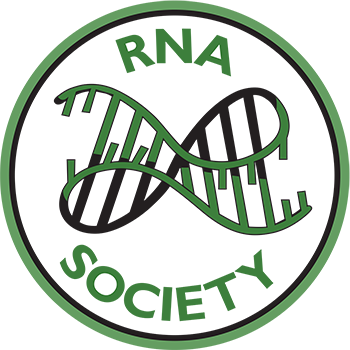David StaněkWritten by: Paula Petronela Groza, PhD Posted: Febbruary 5, 2025  Career goals and dreams can come true at any point; the key is putting in the work every day and never giving up. Such was the case for Prof. David Staněk when he became a member of the European Molecular Biology Organization (EMBO), an organization he considers "the best thing that European countries have done for science." Reflecting on his scientific journey, he admits that as a young scientist, he never imagined one day being a part of such a prestigious organization. His interest in molecular biology led David to Prof. Ivan Raška's lab exactly 30 years ago, where he began his PhD research in cell biology, studying pre-rRNA processing. There, he became fond of RNA, but it wasn’t until his postdoc studies in snRNA biogenesis that he "fell in love with [these] small, fascinating RNA molecules." Two major figures have instilled and cultivated David’s fascination with small noncoding RNAs (ncRNAs). The first was Prof. Tamas Kiss from Paul Sabatier University in Toulouse, France. David participated in a PhD research visit during an exciting period when Kiss lab was discovering the function of snoRNAs. During the three-month visit, Prof. Kiss not only introduced David to the world of small ncRNAs but also ignited his passion for scientific research. The second figure was David’s postdoc adviser, Prof. Karla Neugebauer. She taught [David] almost everything about science and supported and mentored him, something "she still does to this day." In Neugebauer's lab, David contributed to elucidating the role of Cajal bodies in small nuclear ribonucleoprotein (snRNP) biogenesis, "a long and ongoing process" that he is most proud of.
After a prolific five-year postdoc with Dr. Neugebauer, which David considers the best decision of his life as well as "a life-changing experience," he started his own laboratory in his home country at the Institute of Molecular Genetics of the Czech Academy of Sciences in 2007. The major topics that his lab is exploring continue to revolve around splicing and snRNP biogenesis, as he admits, "It's been more than 20 years, and I'm still excited about snRNP biogenesis." Over the years, his lab has contributed significantly to our understanding of snRNPs assembly and RNA splicing. One exciting moment for David’s lab was the discovery of how chromatin affects alternative splicing and splicing of long ncRNAs. Currently, David focuses on elucidating why mutations in splicing factors cause retinal degeneration. Despite being a very challenging project, he is very excited about it because they managed to introduce several new models and "have made great progress." So, if you are interested in the topic, keep an eye out for the publications from his lab. Besides his research activities, David has taught RNA Biology at Charles University for the last twenty years. He hopes his students enjoy his lectures as much as he enjoys teaching. One of his favorite parts of teaching is reading students' essays about RNA, where he always finds something novel and exciting. Furthermore, teaching his graduate students is "a constant source of challenge, excitement and inspiration" as they keep him in motion: "They never let me slow down and rest." In addition to his graduate students, he finds inspiration in several colleagues who have shaped his professional career. One of them is Dr. Vlada Vilim, his first supervisor at the university, who, despite battling an incurable illness, remained passionate about science and maintained his unwavering sense of humor. Every two years, David gets a boost of excitement when he hosts elementary school children at his institution and explains science to them. They amaze him with their curiosity and the questions they ask. David’s advice for graduate students is not to despair if they do not obtain any results within the first year of their PhD. This happened to him as well, and his colleagues reassured him that it happens to everyone. So, find "unanswered questions that are the most interesting" for you, be persistent, and results will come.David acknowledges that supportive colleagues are essential for preventing burnout and that taking sabbaticals at the right time can be equally crucial in staying on a healthy professional path because "crises appear regularly." As you might have guessed, his favorite RNA is not one but all spliceosomal snRNAs because they "are short and very well designed for their function, and although they were discovered 45 years ago, they still hold many mysteries." The passion for the RNA field that Prof. Staněk’s mentor, Dr. Tamas Kiss, instilled in him peaked during the last RNA Society meeting in Edinburgh. Standing in the bustling poster session hallway, he recalls, "I was surrounded by hundreds of discussions buzzing around me, and suddenly I felt an overwhelming sense of joy. It was strange and wonderful at the same time. I had never experienced anything like it before." The future brings a lot of excitement in the field of RNA splicing, according to Prof. Staněk, who believes that "now that the molecular mechanism and spliceosomal complexes have been described in unprecedented detail, the focus will shift to splicing regulation and the links between RNA splicing and other metabolic pathways." Among the fundamental works on this topic were several articles that he really enjoyed reading, which were published in the RNA Journal. First is the work of Stephen Rader and Christine Guthrie on the function of snRNP chaperone Prp24, which sparked the interest in snRNP assembly factors. The second work came a few years later from Reinhard Lührmann's lab on protein-protein interactions within snRNPs, which shed light on the web of interactions that hold snRNPs together. A third work on LSm proteins points to connections between nuclear and cytoplasmic processes by Inglefinger et al. Thus, if you are passionate about splicing, he highly recommends these pieces to get fundamental insights on the topic. And then, if you want to contact Prof. Staněk, the best way is to send him an e-mail, as he is not very active on social media. |
